EASTON, PA – Online registrations are now being accepted for the June 22 virtual open house on the multi-faceted rehabilitation project scheduled to begin later this year on the Northampton Street Toll-Supported Bridge (“the free bridge”) between Easton, PA. and Phillipsburg, NJ.
The public project session will be held via the Zoom conferencing platform 6:30 p.m. June 22. All attendees must register. After an individual registers, he or she will receive the Zoom conference address and/or teleconferencing number.
The online address to register for the virtual open house is: https://us02web.zoom.us/webinar/register/WN_SC97rwfgTuClnkNpzxDhsA. This is address is for individuals who seek to attend online or through a teleconferencing number.
If any prospective attendees do not have computer access and wish to attending via a teleconference phone number, they should contact the Commission’s Director of Community Affairs Jodee Inscho by dialing 267-394-6561 and leaving a message with their name and contact information.
The open house will have a roughly 20 to 30 minute project presentation followed by a question and answer period for the public. The presentation will outline the project’s purpose, identify substructure and superstructure conditions that need rehabilitation or repair, show the new lighting systems that are planned for the bridge, explain the travel lane patterns that will be used to carry out the project’s constructions stages, and summarize the project’s anticipated schedule.
The presentation will be posted on the project’s webpage after the open house, allowing the public an additional opportunity to provide comment. The comment period is scheduled to end at the close of business – 4 p.m. – June 25.
As currently scheduled, project construction is expected to begin in the fall of this year and reach completion in the spring of 2023.
The project’s major tasks are:
- Strengthen floor beams (steel members below the bridge’s road deck)
- Repair/replace buckling steel eye-bar components on the center portion of the bridge, the section that was reconstructed after the 1955 river flood
- Replace the bridge’s two deteriorating fiberglass walkway surfaces
- Outfit the bridge with a new architectural-lighting system
- Repair deteriorating masonry at the bridge’s abutments and wingwalls
- Repaint the bridge
The Commission has established a webpage – www.drjtbc.org/project/freebridge — to explain the project and provide additional background. The open-house registration information is now posted on that page for easy access.
The bridge’s last rehabilitation occurred in 2001. That project involved repair and replacement of some structural steel components, removal of lead paint and repainting, replacement of sidewalk decking, and installation of new pedestrian railings.
The 550-foot-long, 36-foot-wide bridge is the Commission’s busiest non-toll crossing. It carried a daily average of 16,900 vehicles (both directions) in 2019 (pre-COVID) and 15,100 vehicles in 2020 (COVID). The bridge has a three-ton weight limit and a 15-mph speed limit. Bridge monitors are stationed at each end of the bridge on a 24/7 basis to prevent crossings of overweight vehicles.
The bridge is a cantilever truss that is designed to mimic the appearance of a suspension bridge. Largely because of its unique engineering and design, the Northampton Street Bridge is revered by bridge historians and engineers. For example, the online bridge history site – www.historicbridges.org – gives the structure a 10 rating on a scale of 10. Plaques affixed to the bridge’s truss affirm its status as a National Historic Civil Engineering Landmark by the American Society of Civil Engineers.
